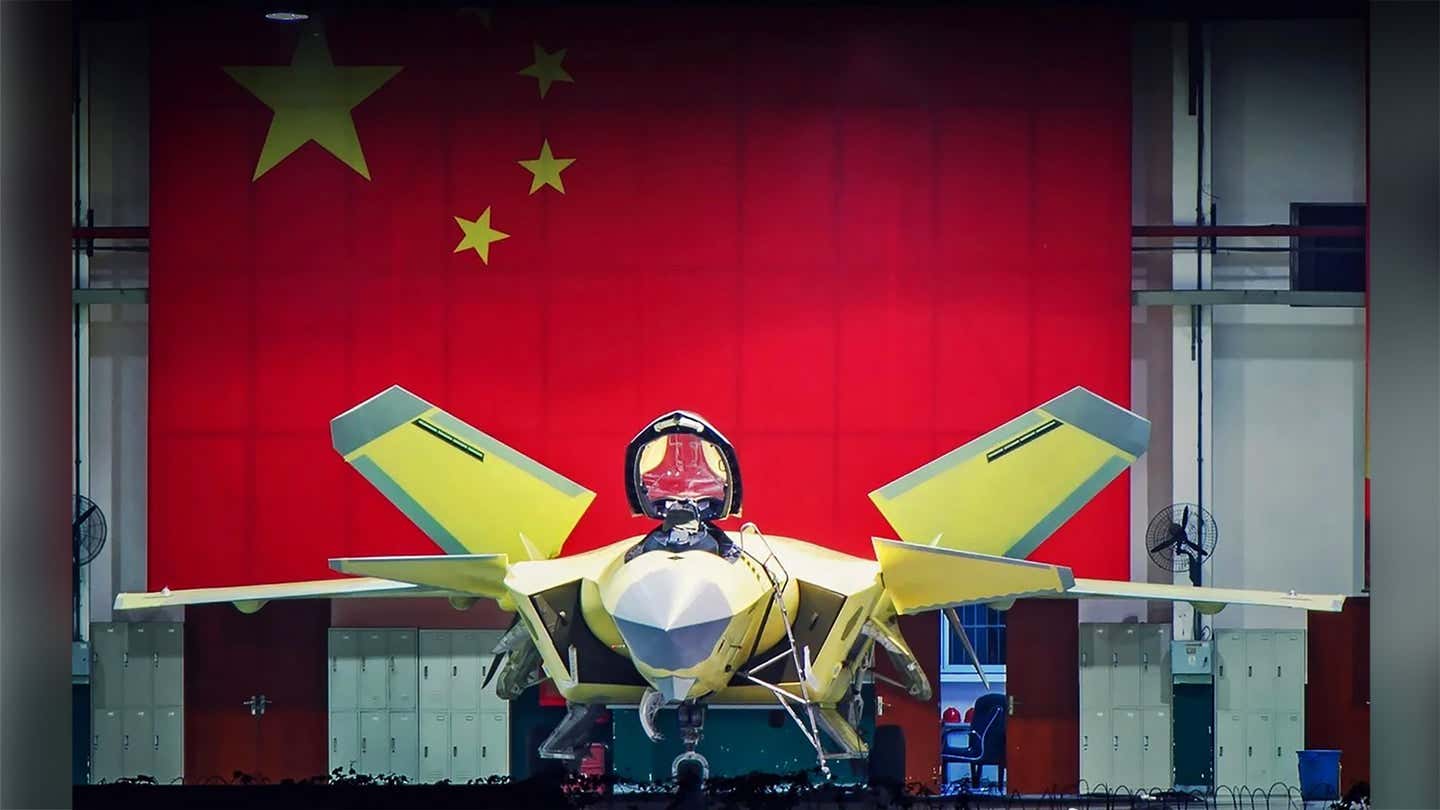China’s J-20 fighter aircraft is the third, fifth-gen operational stealth fighter aircraft in the world. The provision of twin seats in the aircraft makes China’s “Mighty Dragon” more dangerous when compared to the other single-seat fifth-generation aircraft, according to experts.
Recently, the PLAAF reportedly conducted the maiden flight of the twin-seat variant of J-20 stealth fifth-generation aircraft. This addition of an additional seat ensures that the Chinese aircraft has become the world’s first stealth fighter jet with two seats.
The Chinese military officials stated in Global Times that the collection, distribution and processing of information by J-20 aircraft would be executed perfectly with two pilots.
The aircraft has built-in sensors that collect a lot of data; the pilot’s role is to not only collect the data but also to interpret it and then pass on the crucial messages.
During combat missions, the aircraft’s systems usually receive a large amount of information on the enemy. This abundance of data has a purpose to confuse the enemy and two brains in the J-20s cockpit should be able to do a much efficient job.
Previously, twin-seat aircraft were usually used to train new pilots. In September 2021 Yang Wei, the chief designer of the J-20 aircraft stated in a press conference at Airshow China that if twin-seats are included in the J-20 aircraft, it will no longer be a training aircraft, but will instead increase the aircraft’s capabilities.
Wang Ya’nan, the chief editor of the Beijing-based Aerospace Knowledge magazine stated in an interview with the Global Times that air-air combat, ground attack missions, electronic disruptions are challenging for a single pilot, hinting at a twin-seated stealth aircraft variant of J-20.
J-20 Dual- Seater Stealth Aircraft
Having a stealthy twin-seater plane will make it much easier to test the technology to its full extent. A second person acting as a mission commander will considerably facilitate the advent of manned-unmanned teaming and faithful wingmen drones.
As reported by Global Times, a second pilot could make better use of massive amounts of data than a single pilot, turning the twin-seat J-20 into an aerial command center where a swarm of faithful wingman-style drones could be controlled.

Furthermore, China has been using Artificial Intelligence to train its Fighter pilots for quite some time. Given the fact that the twin fighter jet will collect a lot more data with the second pilot on board, the collected data can then be analyzed and used to train the artificial intelligence that could eventually replace the second pilot.
This new J-20 variant would give PLAAF a massive advantage over its foe – the United States and friend – Russia as neither the F-35, F-22 Raptor nor the Su-57 fighter jet can place two heads in the cockpit.
With another head in the cockpit, the aircraft can become a force multiplier and will surely boost J-20’s performance.
J-20: A Threat To India’s Security?
Due to the ongoing India-China border standoff, the induction of J-20’s single-seated fifth-generation variant in the Chinese armed forces was already a major concern for New Delhi.
Now with the twin-seated variant, India would be looking to accelerate its own AMCA fifth-gen program and push the MMRCA 2.0 contract.
Indian experts have emphasized that the J-20 needs to prove its mettle while operating from high-altitude regions like Ladakh. The challenging terrain and unpredictable weather at such altitudes can pose unimaginable challenges to any aircraft.
The air at higher altitudes is very thin and the fighter jets need air for combustion to take place in the engines to allow the aircraft to fly smoothly.
Operations from high-altitude bases would simply imply that the J-20 fighters can carry a limited payload including fuel and missiles resulting in a restrained combat range and limited striking ability.
That is especially bad for China since the PLAAF airbases are situated at longer distances from the disputed border, which means the J-20s or other fighters will have very little time to engage Indian aircraft.

Meanwhile, the Indian Air Force acquired the French Rafales that have vast experience in global combat missions and will be operating from bases closer to the disputed LAC giving them an overwhelming advantage.
Former IAF pilot Vijainder K Thakur says that J-20 is a stealthy fighter. And, “being a low observable aircraft, it will try to carry out its missions mostly undetected.
J-20 missions will include attacks on IAF radars, AD missiles, locating mobile targets within Indian territory, and relaying their coordinates for stand-off attacks by PLAAF bombers and fighter bombers using cruise missiles.”
Thakur asserts that in visual air-to-air combat, the Chinese J-20 will get hammered by IAF Su-30s and Rafales, which is precisely the reason why J-20s will never engage the Indian fighter jets.
And if the Indian Air Force’s claims of detecting and tracking the J-20s at a distance of hundreds of kilometers by Su-30MKI’s Phazotron Zhuk-AE AESA radar are true, then China would also lose the surprise element against the Rafales.




